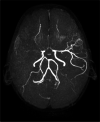Schimke immunoosseous dysplasia: an ultra-rare disease. a 20-year case series from the tertiary hospital in the Czech Republic
- PMID: 36658659
- PMCID: PMC9850320
- DOI: 10.1186/s13052-023-01413-y
Schimke immunoosseous dysplasia: an ultra-rare disease. a 20-year case series from the tertiary hospital in the Czech Republic
Abstract
Background: Schimke immunoosseous dysplasia (SIOD) is an ultra-rare inherited disease affecting many organ systems. Spondyloepiphyseal dysplasia, T-cell immunodeficiency and steroid resistant nephrotic syndrome are the main symptoms of this disease.
Case presentation: We aimed to characterize the clinical, pathological and genetic features of SIOD patients received at tertiary Pediatric Nephrology Center, University Hospital Motol, Prague, Czech Republic during the period 2001-2021. The mean age at diagnosis was 21 months (range 18-48 months). All patients presented with growth failure, nephropathy and immunodeficiency. Infections and neurologic complications were present in most of the affected children during the course of the disease.
Conclusions: Although SIOD is a disease characterized by specific features, the individual phenotype may differ. Neurologic signs can severely affect the quality of life; the view on the management of SIOD is not uniform. Currently, new therapeutic methods are required.
Keywords: Case series; Chronic kidney disease; Nephropathy; Schimke immunoosseous dysplasia; Transient ischemic attacks; Transplantation.
© 2023. The Author(s).
Conflict of interest statement
The authors declare that they have no competing interests. Written informed consent was obtained from all participants or from a parent and/or legal guardian.
Figures




References
-
- Lippner E, Lücke T, Salgado C, et al. Schimke immunoosseous dysplasia. 2002 Oct 1 [updated 2022 Apr 14]. In: Adam MP, Everman DB, Mirzaa GM, Pagon RA, Wallace SE, Bean LJH, Gripp KW, Amemiya A, editors. GeneReviews®. Seattle: University of Washington, Seattle; 1993–2023. PMID: 20301550. - PubMed
Publication types
MeSH terms
Supplementary concepts
Grants and funding
LinkOut - more resources
Full Text Sources
Medical

